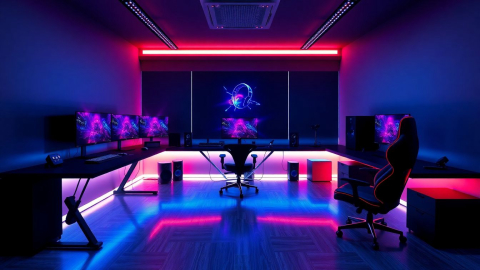The Industrial Revolution in Interior Design: Raw Beauty Meets Modern Elegance

In the ever-evolving world of interior design, few styles have captured the imagination quite like industrial chic. Born from the repurposing of abandoned factories and warehouses, this design aesthetic has transformed from a necessity into a coveted look that celebrates the raw, the authentic, and the functional. Industrial interior design is not just about exposed brick and metal pipes; it's a testament to human ingenuity, a bridge between our industrial past and our sleek, modern present. As we delve into the world of industrial design, we'll explore how this style has revolutionized our living spaces, turning the utilitarian into the extraordinary.
The Genesis of Industrial Chic
The story of industrial interior design begins in the early 20th century, as the second industrial revolution was winding down. Cities were evolving, and many factories and warehouses were left abandoned. As urban populations grew and space became a premium, these vast, empty structures caught the eye of visionaries who saw potential where others saw decay.
According to designer Jessica Davis, "Industrial design became a popular aesthetic when more and more historic commercial buildings and factories began to be converted into residential spaces." This transformation wasn't just about finding affordable housing; it was about embracing the character and history of these spaces.
The industrial design movement gained further momentum in the mid-20th century when artists like Andy Warhol began converting old warehouses into lofts. These spaces became synonymous with creativity and avant-garde living, cementing the industrial aesthetic as a symbol of artistic expression and urban cool.
Key Elements of Industrial Interior Design
Exposed Structural Elements
At the heart of industrial design is the celebration of a building's bones. Where other styles might conceal structural elements, industrial design proudly displays them. Exposed brick walls, visible ductwork, and raw concrete floors are not flaws to be hidden but features to be highlighted.
Designer Alex Nino explains, "Industrial design favors exposing architectural and mechanical details, like brick, beams, ducts, and pipes, rather than trying to conceal them." This approach not only preserves the building's history but also creates a unique visual texture that can't be replicated in new constructions.
The Interplay of Wood and Metal
Industrial design is characterized by a harmonious blend of wood and metal elements. This combination creates a balance between warmth and coolness, softness and hardness. Wooden beams might contrast with steel support columns, while reclaimed wooden floors might be paired with sleek metal light fixtures.
The use of these materials extends to furniture as well. Vintage industrial pieces or reproductions often feature metal frames with wooden seats or tabletops, embodying the perfect marriage of form and function.
A Neutral Color Palette with Character
While industrial spaces might seem austere at first glance, their color palette is rich in subtle variations. Shades of gray, from cool slate to warm charcoal, dominate, punctuated by the warm tones of exposed brick and wood. This neutral backdrop serves as a perfect canvas for pops of color in artwork or accent pieces.
As designer Eilyn Jimenez notes, "The use of alternating textures in monochromatic color palettes always delivers a timeless, inspirational approach that feels pure and welcoming." This approach allows the textures and materials of the space to take center stage.
The Art of the Mix: Vintage and Modern
One of the most captivating aspects of industrial design is its ability to seamlessly blend old and new. Vintage furniture pieces, often inspired by old factory or laboratory equipment, sit comfortably alongside modern, streamlined designs.
Retailers like Restoration Hardware have capitalized on this trend, offering pieces that evoke the past while meeting modern standards of comfort and functionality. Their Vintage Toledo Dining Chair, for instance, reimagines a classic draftsman's chair for contemporary living spaces.
This juxtaposition of eras creates spaces that feel both timeless and cutting-edge, respecting the past while embracing the future.
Beyond the Loft: Industrial Design in Various Spaces
While industrial design may have originated in converted urban lofts, its influence has spread far beyond. Today, elements of industrial style can be found in suburban homes, rural retreats, and even commercial spaces.
The Industrial Kitchen
The kitchen is one area where industrial design truly shines. Stainless steel appliances and countertops, reminiscent of commercial kitchens, blend perfectly with the industrial aesthetic. Open shelving, often made of reclaimed wood and metal piping, replaces traditional closed cabinets, allowing for both storage and display.
Lighting plays a crucial role in industrial kitchens. Vintage-inspired pendant lights with metal shades are popular choices, casting a warm glow over cooking and dining areas while reinforcing the industrial theme.
The Industrial Bedroom
In the bedroom, industrial design creates a cozy yet edgy atmosphere. A metal bed frame might be the centerpiece, complemented by nightstands made from reclaimed wood. Exposed brick walls or concrete floors can be softened with plush bedding and area rugs, creating a balance between hard and soft elements.
Lighting in industrial bedrooms often features adjustable wall sconces or floor lamps with articulated arms, reminiscent of old factory lighting. These functional pieces double as sculptural elements, adding visual interest to the space.
The Industrial Office
The principles of industrial design translate beautifully to office spaces, both home and commercial. Open floor plans, a hallmark of industrial design, promote collaboration and creativity. Desks made from reclaimed wood paired with ergonomic chairs blend function with industrial style.
In larger office spaces, the high ceilings and exposed ductwork common in industrial design can create a sense of openness and energy. As noted in the case of Crone's studio at Sydney's World Square, these elements can serve as a physical metaphor for a company's cultural shift towards openness and innovation.
Sustainability and Industrial Design
One of the most compelling aspects of industrial design is its inherent sustainability. By repurposing existing structures and materials, this style reduces waste and honors the embodied energy of old buildings and objects.
The use of reclaimed wood, vintage furniture, and salvaged architectural elements not only adds character to a space but also gives new life to materials that might otherwise be discarded. This approach aligns perfectly with growing consumer interest in eco-friendly design and circular economy principles.
The Future of Industrial Design
As we look to the future, industrial design continues to evolve. The integration of smart home technology into industrial spaces presents exciting possibilities, allowing for a fusion of raw, industrial aesthetics with cutting-edge functionality.
Moreover, the principles of industrial design are being applied in innovative ways to outdoor spaces, creating urban gardens and rooftop retreats that blend industrial materials with natural elements.
The challenge for designers moving forward will be to maintain the authenticity and rawness that defines industrial style while adapting it to changing lifestyles and environmental concerns.
Conclusion
Industrial interior design is more than just a trend; it's a celebration of history, functionality, and raw beauty. By embracing the imperfections and character of old industrial spaces, this style creates living environments that are both deeply rooted in the past and perfectly suited for modern life.
As we continue to seek authenticity and connection in our increasingly digital world, industrial design offers a tangible link to our industrial heritage while providing a canvas for personal expression and contemporary living. Whether in a converted warehouse loft or a suburban home, elements of industrial design can add depth, character, and a touch of urban sophistication to any space.
The industrial revolution may have ended long ago, but its influence on our living spaces continues to evolve, inspiring us to see beauty in the unexpected and to create homes that are as unique and multifaceted as we are.
References and Further Reading
- Modern Industrial Interior Design: Definition & Home Decor
- How to Decorate Using Industrial Style
- Industrial Interior Design: Everything You Need To Know
- Exploring the Industrial Aesthetic in Interiors Through Corten Tiles
- Designers Explain Everything You Need to Know About Industrial Design
These resources offer deeper dives into specific aspects of industrial design, from its history to practical tips for implementing this style in your own space. Whether you're a design professional or a homeowner looking to add some industrial flair to your living space, these articles provide valuable insights and inspiration.
More Articles
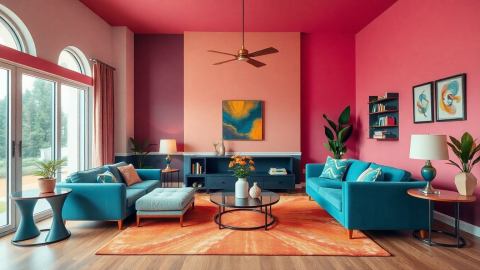
Howzy to Get Into Interior Design: A Comprehensive Guide to Launching Your Creative Career Title
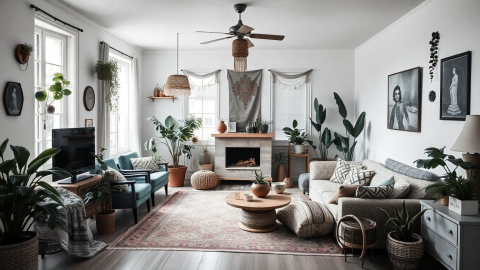
The Art of Bohemian Interior Design: Embracing Free-Spirited Elegance
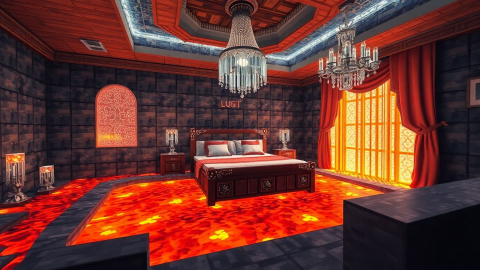
The Minecraft Interior Design Extravaganza: Where Pixels Meet Pretension
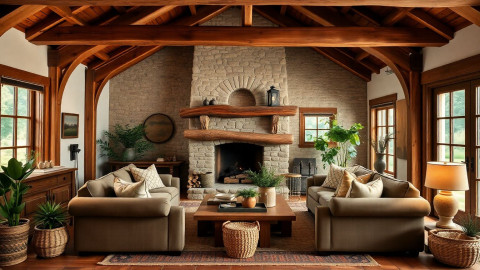
Farmhouse Interior Design: Blending Rustic Charm with Modern Comfort
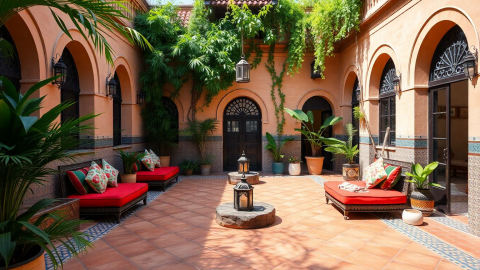
Moroccan Interior Design: A Satirical Journey Through the Land of Poufs and Patterns
